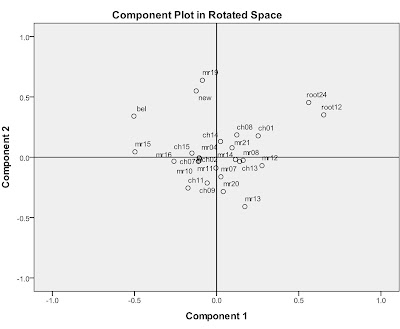There are a lot of unique ways to increase file power. Some of the ideas you absolutely hate ... McDonald's releases their McRib sandwich infrequently (#chomp), and when they do customers place an incremental order they otherwise wouldn't place. File Power increases ... you take a customer who would buy 17 times a year at $15 a transaction and you convert the customer into a customer buying 19 times a year at $15 a transaction ... you just added $30 of file power. Subtract cost of goods and all of a sudden you have margin dollars.
Of course, McDonald's has to purchase File Power ... how are you going to find out that they're offering McRib? They have to advertise McRib. It typically costs money to advertise. The secret, as you know, is to spend less on advertising than the margin you generate from the file power you obtain.
In e-commerce, two brands obtain File Power at your expense.
- Google.
- Facebook.
When word of mouth isn't sufficient to generate sales increases, companies leverage advertising. They purchase file power. Meanwhile, Google and Facebook thrive when companies purchase file power.
Think about the dynamic this way.
- You spend $50 to generate 100 clicks with Google.
- 100 clicks yield 2 orders at $100 each.
- Cost of goods is 60%.
- Transactional Profit = 2*$100*(1-0.60) - $50 = $30.
In the short-term, you give Google $50 so that you earn $30.
What would have happened if you could have generated the order organically?
- 2 orders at $100 each.
- Cost of goods is 60%.
- Transactional Profit = 2*$100*(1-0.60) = $80.
When your brand is "remarkable" you generate $80 of margin.
When your brand is average, you generate $30 of margin and Google generates $50 of revenue.
This is where the CRM guru talks about File Power ... you now have a recent buyer, and recent buyers have more file power than inactive buyers. True!
The problem, of course, is that once a customer buys via an advertising channel, future file power is compromised by the fact that the customer frequently needs advertising to buy in the future.
Now that the customer purchased, the customer might have the following file power.
- 50% chance of buying again next year.
- 2 expected orders at $100 each.
- File Power = 0.50*2*100 = $100.
- Gross Margin = 40%.
- Margin = 100*0.40 = $40.
The customer who buys organically might be expected to generate a 5% ad-to-sales ratio in the future. This means the customer will generate $40 - $100*0.05 = $35 of future contribution.
The customer who buys because of advertising might be expected to generate a 20% ad-to-sales ratio in the future. This means the customer will generate $40 - $100*0.20 = $20 of future contribution.
Is it any wonder that Google/Facebook want you to keep on advertising?
When you buy file power, you alter the future amount of profit you generate. You play a fundamentally different game, one that becomes harder to win ... one that facilitates the transfer of wealth from you to your advertising partners.
No wonder your advertising partners love you!











